
Gröna Lund, or colloquially Grönan, is an amusement park in Stockholm, Sweden. Located on the seaward side of Djurgården Island, it is relatively small compared to other amusement parks, mainly because of its central location, which limits expansion. The 3.8 ha amusement park has over 30 attractions and is a popular venue for concerts in the summer. It was founded in 1883 by James Schultheiss.
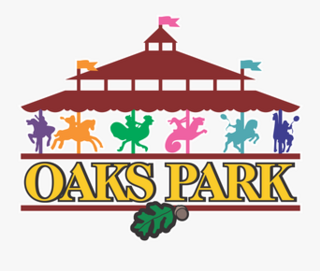
Oaks Park is a small amusement park located 3.5 miles (5.6 km) south of downtown Portland, Oregon, United States. Opened in May 1905, it is one of the oldest continually operating amusement parks in the country.

Lagoon is a family owned amusement park in Farmington, Utah, located about 18 miles north of Salt Lake City. Lagoon is divided into five main areas: The Midway, containing the majority of the rides; Pioneer Village, which has several exhibits displaying pioneer buildings and artifacts; Lagoon-A-Beach, a water park; Kiddie Land, an area with several rides for small children; and X-Venture Zone, featuring more extreme rides that are upcharged. Lagoon also offers an RV park, a campground, and a walking trail outside the park that stays open all year. Every autumn, the park offers Halloween-themed shows and attractions, collectively known as Frightmares.
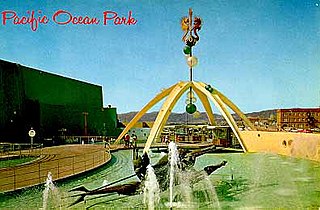
Pacific Ocean Park was a 28-acre (11-hectare) nautical-themed amusement park built on a pier at Pier Avenue in the Ocean Park section of Santa Monica, California in 1958. Intended to compete with Disneyland, it replaced Ocean Park Pier (1926–1956). After it closed and fell into disrepair, the park and pier anchored the Dogtown area of Santa Monica.

Playland Amusement Park is an amusement park in Vancouver, British Columbia, Canada. The amusement park is located at Hastings Park and is operated by the Pacific National Exhibition (PNE), an organization that hosts an annual summer fair and exhibition adjacent to Playland. Playland opened at its current location in 1958, although its predecessor, Happyland, operated at Hastings Park from 1929 to 1957. Playland was formally made a division of the PNE in 1993.
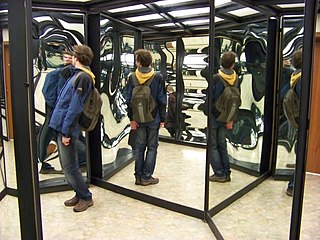
A house of mirrors or hall of mirrors is a traditional attraction at funfairs (carnivals) and amusement parks. The basic concept behind a house of mirrors is to be a maze-like puzzle. In addition to the maze, participants are also given mirrors as obstacles, and glass panes to parts of the maze they cannot yet get to. Sometimes the mirrors may be distorted because of different curves, convex, or concave in the glass to give the participants unusual and confusing reflections of themselves, some humorous and others frightening.
Ocean View Amusement Park was an amusement park at the end of Granby Street at Ocean View Avenue in Norfolk, Virginia, USA, opened in 1905 and operated by Jack L. Greenspoon and Dudley Cooper. The amusement park and its wooden coaster, the Rocket, appeared in the 1977 movie Rollercoaster but closed on September 4, 1978. The Rocket was destroyed as part of the making of the television program The Death of Ocean View Park in 1979.

Trimper Rides Of Ocean City is a historic amusement park located near the inlet at South First Street and the boardwalk in Ocean City, Maryland, United States. It was founded in 1893 as The Windsor Resort. It is located at the south end of the boardwalk and consists of three outdoor lots as well as an indoor section.
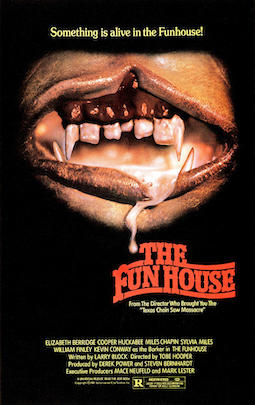
The Funhouse is a 1981 American slasher film directed by Tobe Hooper, written by Larry Block and starring Elizabeth Berridge, Kevin Conway, William Finley, Cooper Huckabee, Miles Chapin, Largo Woodruff, Wayne Doba, and Sylvia Miles. The film's plot concerns four teenagers who become trapped in a dark ride at a local carnival in Iowa and are stalked by a mentally disabled murderous carnie.
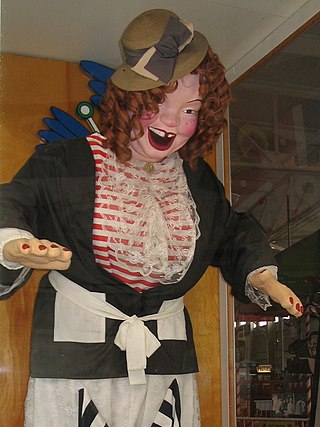
Laffing Sal is one of several animatronic characters that were built primarily to attract carnival and amusement park patrons to funhouses and dark rides throughout the United States. Its movements were accompanied by a raucous laugh that sometimes frightened small children and annoyed adults.

A haunted attraction is a form of live entertainment that simulates visiting haunted locations or experiencing horror scenarios. They usually feature fearsome sets and characters, especially demons, ghosts, skeletons, zombies, monsters, possessed people, witches, serial killers, and slashers. Humorous characters may also be included.
The Pike was an amusement zone in Long Beach, California. The Pike was founded in 1902 along the shoreline south of Ocean Boulevard with several independent arcades, food stands, gift shops, a variety of rides and a grand bath house. It was most noted for the Cyclone Racer (1930–1968), a large wooden dual-track roller coaster, built out on pilings over the water.

Playland was a 10-acre (40,000-square-meter) seaside amusement park located next to Ocean Beach, in the Richmond District at the western edge of San Francisco, California, along Great Highway, bounded by Balboa and Fulton streets. It began as a collection of amusement rides and concessions in the late 19th century, and was preceded by Chutes at the Beach, opened in 1921. Playland closed Labor Day weekend in 1972.

Mystery Fun House was an attraction complex in Orlando, Florida, United States. It was founded with the help of David A. Siegel on March 27, 1976, and operated through February 18, 2001. Located near International Drive on Major Boulevard across from Universal Orlando Resort, the fun house expanded over time to include a laser-tag facility, an arcade, a dinosaur-themed mini golf course, and other attractions.

Bushkill Park is an amusement park located in Easton, Pennsylvania, generally geared toward younger audiences. The facility operated continuously from 1902 to 2004 and during the summer of 2006, and was then closed until January 2017 when the roller skating rink and the rest of the park reopened. Bushkill Park ranks among the oldest amusement parks in the nation.
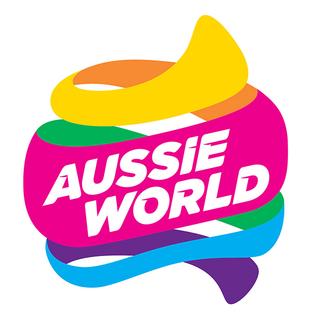
Aussie World is a privately owned, medium-sized, family theme park on the Sunshine Coast, Queensland, Australia. It has over 30 rides and attractions.

Fiesta Shows is a traveling carnival that entertains and visits over 60 communities throughout the New England region. It is New England's largest carnival.
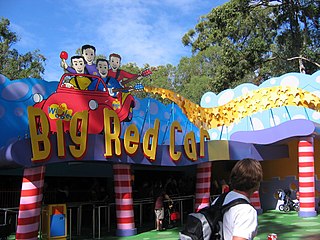
The Big Red Car Ride was a dark ride that takes 6 guests at a time on a 120-metre (390 ft) car journey through the Wiggles' house. The house features Wag's Kennel, Henry's Underwater Big Band, and Dorothy's rosy garden. The attraction opened with Wiggles World on 17 September 2005 and closed on 12 August 2020.


















